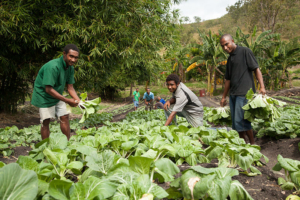Top 10 Facts About Living Conditions in Papua New Guinea

With hundreds of ethnic groups indigenous to Papua New Guinea, the nation is made up of predominantly rural villages with their own languages. These top 10 facts about living conditions in Papua New Guinea gives an insight into what life in these communities is like.
Top 10 Facts About Living Conditions in Papua New Guinea
- Papua New Guinea’s vast natural resources are being threatened. While 80 percent of Papua New Guinea is covered in forest, the resources are predicted to be used up in a generation, possibly just a decade. Home to what conservationists call “the last rainforest,” Papua New Guinea is home to massive resources loggers are rushing to exploit due to it being one of the last nations to legally permit the exportation of raw logs. As Vincent Mutumuto, a local of rural Papua New Guinea told the Gazette, the foreign logging is destroying many tiny farms such as his banana tree and watermelon farm, which brings in his family of 16’s only income. While loggers are thriving on the nation’s resources, Papuans and the economy of their nation are suffering from it.
- Papua New Guinea has failed to meet the Millennium Development Goals. With an average life expectancy of 62.9 years, the nation is ranked 157 out of 187 countries on the Human Development Index. Healthcare, water and sanitation, civil unrest and education are all behind this statistic. The nation is one of only a handful to not reach these goals.
- Tuberculosis incidences are highest in the region. Humid air and weak immune systems due to malnutrition allow the disease to stay strong. While much of the world sees tuberculosis as a thing of the past, it remains one of the most infectious killers in Papua New Guinea. The region of Daru Island in the country has been called by the World Health Organization (WHO) as a “global hotspot” for drug-resistant tuberculosis. The World Bank has contributed $15 million in the form of aid in screenings and programs diagnosing and treating the disease. Results of this multi-nation effort have proved positive thus far, and the programs are seeing expansion.
- Vaccinations aren’t accessible. For the population of 8.25 million, vaccinations must be helicoptered into the remote areas many locals live, if they are available at all. The World Health Organization has been sending aid to the authority on vaccinations in Papua New Guinea, the 1981-born Expanded Programme on Immunization (EPI) in the form of cleaner injections, safer waste disposal, accessible screening processes and setting up effective domestic production. Additionally, the WHO sent a score of important immunizations, such as those for maternal and neonatal tetanus, measles and hepatitis B.
- Water is a luxury. Many towns across Papua New Guinea have no central water supply system. Children must travel long distances to lug jugs back to their families. According to data from the World Bank, Papua New Guinea’s increase in accessible drinking water increased by an insignificant six percent while its overall sanitation index decreased by one percent, and that overall Papua New Guinea has the lowest water and sanitation access indicators among the 15 developing Pacific Island nations. Furthermore, the lack of water is impacting children’s education. As one teacher explained to World Bank, “I have seen that the problem of water is a major problem that affects many of our students in learning especially during the dry season.” Students are sent home early (around 12 p.m.) in order to help their parents gather water. During the dry season, students often miss school for days at a time.
- Violence is a side effect of poverty. Physical and sexual abuse are common in Papua New Guinea, and many occurrences committed by the police themselves. According to Human Rights Watch, police beat 74 men and slashed their ankles after a street brawl in the capital of Port Moresby this past May.
- Papua New Guinea is living in the dark. Only 20 percent of the nation’s population had access to electricity as of 2017. While PNG Power Ltd, the company running the nation’s electricity, is working with rural communities to provide power, development is still necessary.
- Businesses are improving. Rural wellbeing is being raised by a ‘bottom-up’ approach. This entails private sector involvement in isolated villages, focusing on improving family businesses such as local farms where the majority of citizens make their livelihood. This is not only generating entrepreneurship but also improving living conditions for the communities. Roberta Morlin is leading the trend of young entrepreneurs in Papua New Guinea. She said, “When I first started in 2015, I had 30 different ideas and I had to validate (reduce) those ideas down to 15. I had to further validate over the next 15 months down to four, which I am currently working on.”
- Papua New Guinea is experiencing economic growth. With abundant national reserves and improving family businesses, Papua New Guinea has experienced 14 years in a row of positive GDP growth. Between 2003 and 2015, the nation’s economy grew and proved that with the right involvement the country can develop further.
- People are migrating to Papua New Guinea. A new trend for Australians to move to the country is bringing Papua New Guinea hope. According to People Connexion, the decision is due to the slower pace of living and sense of community present there. This new trend to move and work in Papua New Guinea could hopefully greatly boost their economy.
As Papua New Guinea strives to meet future Millennium Development Goals, there must be an improvement in the economy, education and healthcare. Attention must be focused on locals, preserving natural resources, and helping improve productivity within small businesses in order to improve overall living conditions in Papua New Guinea.
– Maura Byrne
Photo: Wikimedia Commons
